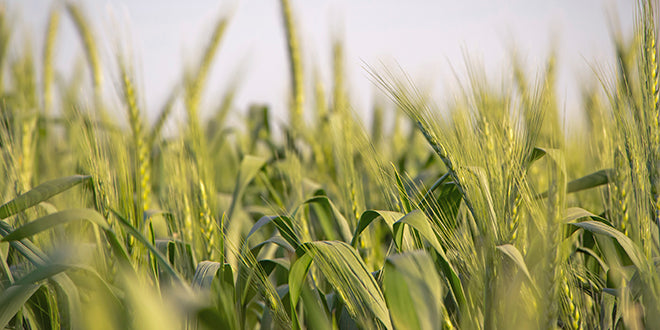“And God said Let the earth bring forth grass, the herb yielding seed, and the fruit tree yielding fruit after his kind whose seed is in itself, upon the earth: and it was so. And the earth brought forth grass, and herb yielding seed after his kind; and the tree yielding fruit, whose seed was in itself, after his kind: and God saw that it was good. And the evening and the morning were the third day.”
Then God Created The Sun, Moon, and Stars
When God created the plant life on day three, it needed sunlight with which to grow and there was no sun, so on day four God created the sun to give light upon the earth, light that was absolutely necessary for the plants created on day three to grow and thrive:“And God said, Let there be lights in the firmament of the heaven to divide the day from the night; and let them be for signs, and for seasons, and for days, and years. And let them be for light in the firmament of the heaven to give light upon the earth: and it was so. And God created two great lights; THE GREATER LIGHT TO RULE THE DAY and the lesser light to rule the night: he made the stars also. And God set them in the firmament of the heaven to give light upon the earth. And to rule over the day and over the night and to divide the light from the darkness and God saw that it was good. And the evening and the morning were the fourth day.” (Genesis 1:14-19)
All Earth's Energy Originates In The Sun
All the energy on earth originates in the sun. As for the plants, as they grow, the sun's energy enters the plant through a process called photosynthesis, converting the sun’s energy into chlorophyll, so that humans and animals who feed on these green plants can receive the nourishment necessary to sustain life and growth. Chlorophyll (which is basically metabolized sunlight), minerals, and water together are the closest relative to human blood. The molecular structure of chlorophyll is almost identical to the molecular structure of human blood (the one difference is that the center element in chlorophyll is magnesium, but the center element in blood is iron). Ingesting chlorophyll is almost like receiving a blood transfusion! All of God’s animal creations, including humans, receive this sun energy when they consume green leafy plant foods. The plant-eating animal receives it directly from the green leaves while the carnivorous animal receives this sun energy second hand when they consume the flesh of a plant eating animal. Cereal grasses contain the highest form of sun energy and thus have within them the greatest source of nutrients of all plant foods. Cereal grasses would include wheat grass, barley grass, rye grass, oat grass, buckwheat grass, millet grass, etc. God made cattle with several digestive compartments so that they could digest and extract this sun energy by directly grazing on these grasses. Man does not have these extra digestive compartments to process these grasses before they reach the stomach. So, it is very difficult for man to obtain the sun energy and nutrients in grasses by directly eating them.Juicing Grass Allows Man To Access This Sun Energy
Rather than eating grass directly, breaking the grass' cellular structure by chopping the grass in a blender can make nutrients available to the human body, but on a limited basis. The best way to get these nutrients and sun energy into the body is by harvesting them, run the grass through a juicier, and then consuming the juice alone. Because all fiber has been removed by the juicing process, these juices require practically no digestive effort, meaning that the nutrients that have been concentrated into the juice can go almost directly into the bloodstream. There is no better way of getting this sun energy and these nutrients into our bodies than by juicing. It is almost like intravenous feeding! Within minutes of consuming the green grass juices, the sun energy and nutrients are in the blood stream providing energy and the building materials the body needs to build superior cells. Green plants have the God-given ability to transform pure sunlight (plus minerals, carbon dioxide, and water) into a glorious structure capable of nourishing the human body in ways no other food is capable of doing.
My First Introduction To Cereal Grasses
My first introduction to cereal grasses was when I spent some time at the Hippocrates Institute in Boston, Massachusetts with Dr. Ann Wigmore in the late 1970s. At that time she was growing wheatgrass in cafeteria trays on racks in the windows of her three story brownstone house. It was truly a learning experience for me and one I will never forget, because her kitchen was the first kitchen I had ever seen that did not contain a cook stove. All foods were consumed in their raw state and included lots of wheatgrass juice and other juices, sprouts, whole raw foods, and blended, raw foods. There in that brownstone in Boston, I learned how to grow living foods, both sprouts and wheatgrass, indoors. We would harvest the grass from the cafeteria trays several times each day and run the grass through a juicing machine. I must confess I did not find the taste of the freshly extracted wheatgrass juice very appealing but Dr. Ann said it was good for me and so I drank it. After my stay with Dr. Ann, I came home, purchased some cafeteria trays, some potting soil, some wheat seed, a juicer, and started growing wheatgrass in the windows of my home, harvesting the grass and running it through my newly purchased hand-cranked juicing machine and drinking that not-so-pleasant tasting green juice each day.
What's Wrong With Growing Wheatgrass In Cafeteria Trays?
Since that first experience, I have done a lot of research and experimenting on how to best grow cereal grasses for juicing. I have learned a lot — and during this learning curve I have found a better way of growing cereal grasses than the way I first learned to grow them. Following are a few of the reasons I have found that growing cereal grasses in cafeteria trays is not the best way of growing them:- The amount of nutrients available to the root of the growing seed is limited. The nutrients contained within the seed itself, along with the nutrients found in the inch or so of growing medium in the cafeteria tray are all that the roots have access to; not to mention the diffused sunlight that comes in through a window.
- In the warm atmosphere of a house, sprouting takes place too rapidly and the grass is ready for harvesting in 10-14 days. This does not allow enough time for the plant to develop a significant root system. Due to the limited amount of soil in the tray, a very miniscule amount of nutrients are absorbed into the plant.
- In this warm indoor atmosphere, shoots mature too rapidly, resulting in a simple carbohydrate makeup rather than a complex carbohydrate. Simple carbohydrates convert to sugar too rapidly and thus are in the least desirable form for the body to receive them.
“Tray grown grass, grown indoors, never achieves the jointing stage" when most of the vitamins and protein reach their peak bold emphasis mine>.Also,
“because it grows so quickly under warm conditions, the plant has a relatively high level of simple sugars... The accelerated growth causes the indoor plant to put most of its energy into growing leaves rather than roots. Thus very few minerals can be absorbed from the roots and utilized to produce more complex nutrients. The warm temperatures and low air circulation also cause growing problems. Mold is the scourge of all indoor growers and that is because grass likes it cool ... The soil in trays is only 1-2 inches deep and the roots are barely mature enough to assimilate nutrients no matter how good the soil." “In contrast, outdoor grass develops deep roots, pulling up minerals and manufacturing vitamins over 60-200 days of slow growth .... Sun beats down on the field crop for 4-8 weeks (longer for winter wheat). Such exposure and slow growth in the cool fall or spring turns the grass into a solar collector, storing high concentrations of energy in its leaves. This provides a full spectrum of chlorophyll, trace minerals and micro-nutrients. This is how wheatwere designed to grow. “In nature, the purpose of the plant is to produce grain. Once it has accumulated enough solar energy/nutrition, it generates the wheat berries which we collect and grind into flour. By harvesting the plant just before it joints, we are taking advantage of the vegetable at its nutritional prime. Although you can grow it indoors and come close, the finest wheat and barley grass is grown outdoors."
Advantages Of Growing In The Ground And Outdoors
Common sense and nature tell us that growing in the ground out-of doors is the way God designed our food to grow and there are a number of reasons why growing cereal grasses out-of-doors is superior to growing them indoors.- Grown in deep mineral- and nutrient-dense soil provides a huge reservoir from which the roots can draw nutrients, rather than being limited to an inch of soil in a cafeteria tray.
- The seeds when planted in the fall develop roots throughout the fall, winter, and spring, extracting a broad range of nutrients.
- Shoots develop very slowly in the cool fall, winter and spring seasons, producing a much more complex carbohydrate which the body handles much better than the simple carbohydrate found in the cafeteria tray grown grass.
- Grass is harvested at peak of nutrition, prior to the jointing stage at which time the grass is preparing to produce the grain. Once the grain starts to form, nutrient density in the leaf drops significantly.
- Since the grass is harvested prior to the jointing stage it contains no gluten (gluten is found only in the grain or seed of the plant).






